
Explore the Revered Yasukuni-jinja Shrine: A Blend of History and Spirituality
Discover the historical significance and serene beauty of Yasukuni-jinja Shrine, a must-visit Shinto site in the heart of Tokyo.
Yasukuni-jinja Shrine, nestled in the heart of Tokyo, is a significant Shinto shrine that pays homage to Japan's war dead. It's a place of deep historical significance and cultural reflection, perfect for tourists seeking to understand Japan's complex past. Visitors can explore beautiful gardens, admire the stunning architecture, and participate in traditional rituals while soaking in the serene atmosphere amidst bustling Tokyo.
A brief summary to Yasukuni-jinja Shrine
- 3 Chome-1-1 Kudankita, Chiyoda City, 3 Chome Kudankita, Tokyo, 102-0073, JP
- +813-3261-8326
- Visit website
- Monday 6 am-6 pm
- Tuesday 6 am-6 pm
- Wednesday 6 am-6 pm
- Thursday 6 am-6 pm
- Friday 6 am-6 pm
- Saturday 6 am-6 pm
- Sunday 6 am-6 pm
Local tips
- Visit during cherry blossom season for stunning views of sakura in bloom.
- Participate in a traditional ritual to experience authentic Shinto practices.
- Explore the museum on-site for a deeper understanding of Japan's military history.
- Plan your visit early in the day to enjoy a quieter experience.
- Respect the solemn nature of the shrine, especially during ceremonies.
Getting There
-
Subway
From Tokyo Station, take the JR Chuo Line (Rapid) towards Takao. Get off at the next stop, which is Ochanomizu Station. From Ochanomizu Station, transfer to the Tokyo Metro Marunouchi Line and take a train towards Ikebukuro. Get off at the next stop, which is Kudanshita Station. Exit the station through Exit 2. Walk straight for about 5 minutes and you will reach Yasukuni-jinja Shrine, located at 3 Chome-1-1 Kudankita.
-
Bus
From Tokyo Station, take the Toei Bus bound for Chiyoda. Get off at the Yasukuni Shrine stop (Yasukuni Jinja). The bus ride will take about 10-15 minutes, depending on traffic. Once you exit the bus, the shrine will be directly in front of you.
-
Walking
If you are in the Chiyoda area, you can walk to Yasukuni-jinja Shrine. From the Imperial Palace, head southwest towards the Kudanshita area. Walk along the main road, and after about 20 minutes, you should see the entrance to Yasukuni-jinja Shrine on your left.
-
Taxi
You can also take a taxi to Yasukuni-jinja Shrine. Simply tell the driver 'Yasukuni Jinja' (靖国神社). The shrine is a well-known location in Tokyo, and the ride will take around 10-15 minutes depending on traffic conditions.
Discover more about Yasukuni-jinja Shrine
Iconic landmarks you can’t miss
Statue of Ōmura Masujirō
0.2 km
Discover the Statue of Ōmura Masujirō in Chiyoda City, a historical landmark blending artistry and cultural significance in the heart of Tokyo.

Ushigome Bridge
0.7 km
Discover the charm of Ushigome Bridge in Tokyo, a serene spot perfect for photography and leisurely strolls amidst the city's vibrant landscape.

Kita-Hanebashi Gate
1.1 km
Explore the historical Kita-Hanebashi Gate in Tokyo, a stunning heritage site that reflects the rich culture and architectural beauty of Japan.

Hokokuji
1.1 km
Explore the tranquility of Hokokuji Temple in Shinjuku, Tokyo, a serene sanctuary rich in history and natural beauty amidst the urban landscape.

認定登記基準点
1.4 km
Discover the charm of Misakicho in Chiyoda City, where history meets modernity in the heart of Tokyo's vibrant culture.

Imperial Palace East Gardens
1.5 km
Experience the serene beauty of the Imperial Palace East Gardens, a lush retreat steeped in history and tranquility in the heart of Tokyo.

The East Gardens of the Imperial Palace
1.5 km
Explore the East Gardens of the Imperial Palace, where history meets tranquility in the heart of Tokyo's vibrant landscape.

Ōte-mon Gate
1.7 km
Explore the stunning Ōte-mon Gate in Tokyo, a historical landmark that embodies the beauty of Japanese heritage and architecture.

Japanese Geodetic Origin Point
1.9 km
Discover the Japanese Geodetic Origin Point, a historical landmark symbolizing Japan's precision in mapping and geographical significance.

Sakurada-mon
2.0 km
Discover the majestic Sakurada-mon, a historical landmark in Tokyo, where Japan's imperial heritage meets serene natural beauty.

Ochanomizu Station
2.0 km
Explore the rich history and vibrant culture around Ochanomizu Station, your gateway to the best of Tokyo's attractions and experiences.
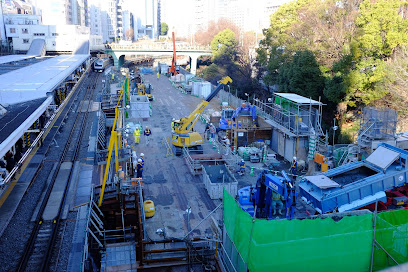
Wadakura-mon Gate
2.0 km
Explore the serene beauty and historical significance of Wadakura-mon Gate, the majestic entrance to Tokyo's Imperial Palace, set in lush gardens.

State Guest House Akasaka Palace
2.1 km
Discover the stunning Akasaka Palace in Tokyo, a historical landmark blending traditional Japanese architecture with Western elegance amidst beautiful gardens.

Suga Shrine
2.2 km
Explore Suga Shrine in Tokyo: A tranquil Shinto site blending spirituality with stunning architecture and serene gardens.

Yushima Seido
2.2 km
Explore Yushima Seido, Tokyo's historic shrine celebrating education, virtue, and Japan's cultural heritage amidst serene gardens and stunning architecture.

Unmissable attractions to see
Yushukan Museum
0.1 km
Discover the Yushukan Museum in Tokyo, where Japan's military past comes to life through captivating exhibits and historical artifacts.

Chidorigafuchi Green Way
0.4 km
Discover the tranquil beauty of Chidorigafuchi Green Way, a scenic park in Tokyo perfect for cherry blossom viewing and peaceful strolls along the Imperial Palace moat.

Chidorigafuchi Moat
0.5 km
Experience the serene beauty of Chidorigafuchi Moat, where history meets nature in the heart of Tokyo.
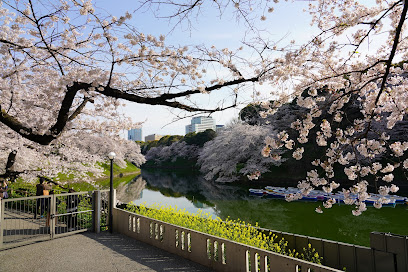
Ushigome Moat
0.5 km
Explore the historic Ushigome Moat in Tokyo, a serene landmark offering picturesque views and a glimpse into Japan's rich heritage.

Tayasu-mon Gate
0.5 km
Discover the historical elegance of Tayasu-mon Gate, a beautifully crafted symbol of Japan's rich cultural heritage in the heart of Tokyo.

Chidorigafuchi Boat Pier
0.5 km
Experience the tranquility of Tokyo at Chidorigafuchi Boat Pier, where history meets nature in a serene boating adventure.

Chidorigafuchi National Cemetery
0.5 km
Explore the tranquil beauty and historical significance of Chidorigafuchi National Cemetery, a serene tribute to Japan's military heroes amidst nature's splendor.

Nippon Budokan
0.5 km
Discover Nippon Budokan, Tokyo's iconic venue for martial arts and music, where tradition meets modern culture in a breathtaking setting.

Clock Tower
0.6 km
Discover tranquility at Tokyo's Clock Tower in Kitanomaru Park, a historical landmark offering a serene escape amidst lush greenery and cultural richness.
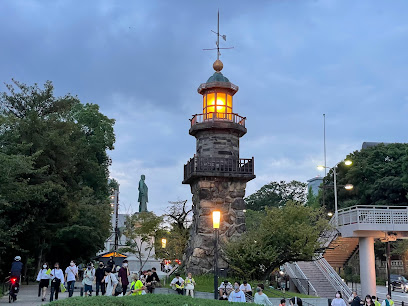
Chidorigafuchi Park West Side
0.6 km
Discover the tranquil beauty of Chidorigafuchi Park West Side, a cherry blossom paradise and historic retreat in the heart of Tokyo.

Kita-no-maru Park
0.6 km
Discover the serene beauty and rich history of Kita-no-maru Park, a tranquil retreat in the heart of Tokyo's vibrant urban landscape.
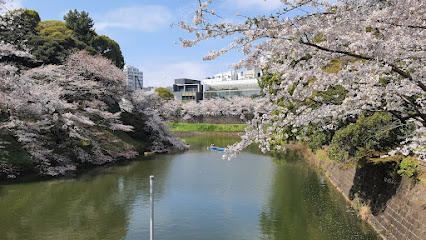
Tokyo-daijingu Shrine
0.7 km
Discover the tranquility of Tokyo-daijingu Shrine, a sacred haven in the heart of Tokyo, where tradition meets serenity in stunning surroundings.

Site of Ushigome Castle
0.9 km
Explore the historical charm of Ushigome Castle in Shinjuku, Tokyo, where the echoes of the past blend with serene surroundings.

Chidorigafuchi Park
0.9 km
Experience the beauty and tranquility of Chidorigafuchi Park, a stunning urban retreat in Tokyo, perfect for cherry blossom viewing and leisurely strolls.

Kakurenbo Yokocho (Hide-and-Seek Alley)
0.9 km
Explore Kakurenbo Yokocho, Tokyo's enchanting Hide-and-Seek Alley, where culinary delights and traditional charm await your discovery.

Essential places to dine
SUGIDAMA Kagurazaka
0.9 km
Discover the essence of Japanese dining at SUGIDAMA Kagurazaka – where tradition meets creativity in every dish.

SECRETO
1.2 km
Discover SECRETO: A charming French restaurant in Tokyo's Shinjuku offering exquisite dishes and an intimate dining atmosphere.

Unico-co
1.6 km
Experience Unico-co: Where Traditional Japanese Cuisine Meets Modern Innovation in the Heart of Tokyo.
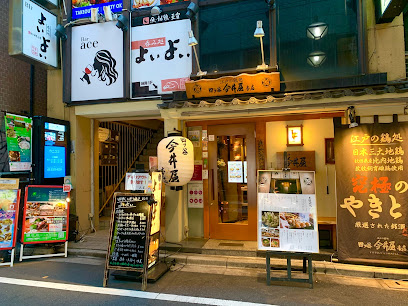
Yotsuya Uoichi
1.7 km
Experience authentic Japanese izakaya dining at Yotsuya Uoichi with fresh seafood and a warm atmosphere in Tokyo's vibrant Shinjuku district.

Sushi Omi
1.7 km
Discover Sushi Omi: Tokyo's premier destination for authentic Japanese sushi crafted with fresh ingredients and expert artistry.

Kōdōkan
1.7 km
Explore Kōdōkan: The historic birthplace of judo in Tokyo featuring training facilities, a museum, and an immersive cultural experience.

Plaiga TOKYO
2.0 km
Discover culinary artistry at Plaiga TOKYO - where modern French cuisine meets sophistication in the heart of Marunouchi.

japan resturant
2.0 km
Experience authentic Japanese flavors at this charming Shinjuku restaurant, where tradition meets taste in every bite.

The Cafe By Aman
2.2 km
Discover unparalleled elegance and exquisite flavors at The Cafe By Aman in Tokyo's Otemachi Tower.

Nagatacho Sushi Kanesaka
2.2 km
Discover authentic Japanese flavors at Nagatacho Sushi Kanesaka, where every bite transports you to culinary bliss.

Musashi by Aman
2.2 km
Experience the art of sushi at Musashi by Aman – where tradition meets luxury in Tokyo's skyline.

Tempura Takashichi
2.2 km
Experience authentic tempura artistry at Tempura Takashichi in Shinjuku, where every bite reveals Japan's culinary finesse.

Nikutei Futago
2.3 km
Experience the best of Yakiniku at Nikutei Futago - where quality meets tradition in every halal bite.

Tosa Cuisine Neboke Marunouchi
2.3 km
Experience authentic Tosa cuisine at Neboke Marunouchi – where tradition meets flavor in every dish.

Rangitoto Tokyo
2.3 km
Experience innovative New Zealand cuisine in Tokyo at Rangitoto – where every dish tells a story of creativity and flavor.

Markets, malls and hidden boutiques
Milonga Nueva
1.4 km
Experience the charm of tango culture while savoring exquisite coffee in the heart of Tokyo at Milonga Nueva.
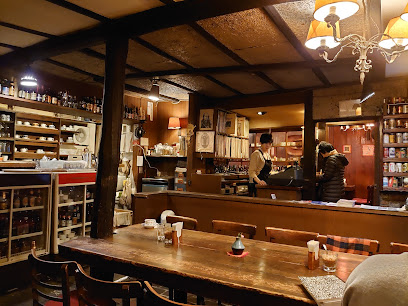
ANGELINA TOKYO
2.0 km
Discover elegance and style at Angelina Tokyo, a premier shoe boutique in Shinjuku, offering exquisite footwear for every occasion.

Wagashi-dokoro Osumitamaya Honten
2.1 km
Experience the art of Japanese confectionery at Wagashi-dokoro Osumitamaya Honten, where tradition and flavor come together in every sweet.

HIDEO TOKYO
2.2 km
Experience the elegance of modern Japanese design at HIDEO TOKYO, a must-visit home goods store in Akasaka, Tokyo.

Nippon Department Tokyo
2.4 km
Discover the essence of Japan at Nippon Department Tokyo, your one-stop shop for unique souvenirs, local delicacies, and cultural treasures.

Bingoya
2.4 km
Explore Bingoya in Shinjuku for a unique selection of Japanese handicrafts and souvenirs that embody the spirit of Tokyo.

SWEETS & GIFTS
2.4 km
Discover a luxurious dessert experience at Sweets & Gifts in Marunouchi, Tokyo, offering exquisite pastries and gourmet chocolates.

Another Japan
2.5 km
Experience the delightful fusion of Japanese sweets and souvenirs at Another Japan, a unique variety store in the heart of Tokyo.

AKIHABARA KOTOBUKIYA
2.5 km
Discover an extraordinary selection of anime figures and collectibles at Akihabara Kotobukiya, a paradise for pop culture enthusiasts in Tokyo.
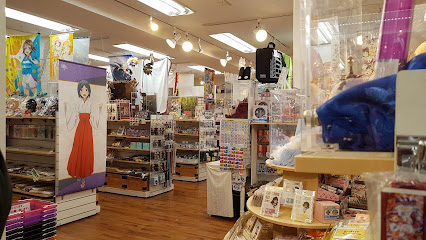
THE SHOP TOKYO
2.5 km
Explore the whimsical world of THE SHOP TOKYO, where unique gifts and delightful surprises await in the heart of Marunouchi.

Good Design Store TOKYO by NOHARA
2.5 km
Explore Good Design Store TOKYO by NOHARA for unique gifts and home goods that reflect Japan's rich design culture.

OLD-FASHIONED STORE TOKYO
2.5 km
Experience a delightful blend of nostalgia and modernity at Old-Fashioned Store Tokyo, where unique fashion accessories and novelty items await.

gee store!!
2.5 km
Discover the ultimate hobby store in Tokyo, where passion for collectibles and pop culture comes to life in a vibrant shopping experience.

Laox
2.5 km
Explore Laox in Akihabara for an unforgettable duty-free shopping experience featuring beauty, electronics, and authentic Japanese souvenirs.

Akky II
2.5 km
Discover exceptional duty-free shopping at Akky II in Tokyo, featuring a wide array of Japanese products and exclusive deals for travelers.

Essential bars & hidden hideouts
Lilliput
1.1 km
Discover Lilliput, Tokyo's unique bar offering innovative cocktails in a cozy setting perfect for unwinding after a day of exploration.

VIRTÙ
1.8 km
Experience a unique blend of French and Japanese cuisine at VIRTÙ, Tokyo's premier bar and restaurant in Otemachi.

Vowz Bar
2.0 km
Discover the vibrant flavors of Japan at Vowz Bar, a unique izakaya experience nestled in the heart of Shinjuku's nightlife.

Science Bar INCUBATOR
2.0 km
Experience the fusion of science and nightlife at Science Bar INCUBATOR in Shinjuku, Tokyo – where cocktails meet creativity.

KAKURETAI- Speakeasy Bar
2.1 km
Experience the art of cocktail making at KAKURETAI, Tokyo's enchanting speakeasy bar nestled in the heart of Shinjuku.

H2 INTERNATIONAL BAR
2.1 km
Experience the vibrant nightlife of Shinjuku at H2 International Bar, known for its lively atmosphere and delicious cocktails.

Orchard Knight
2.2 km
Discover the vibrant nightlife of Tokyo at Orchard Knight, a cocktail bar offering expertly crafted drinks and a cozy atmosphere for all.

Echigo Bar Akasaka Nihonshu
2.2 km
Experience the authentic taste of Japan at Echigo Bar Akasaka Nihonshu, where premium sake and delightful cuisine await in a cozy atmosphere.

RIGOLETTO WINE AND BAR
2.3 km
Experience the best of Italian and Spanish cuisine at Rigoletto Wine and Bar, featuring an exquisite wine selection in Tokyo's Marunouchi district.

Satin
2.3 km
Satin Bar in Tokyo: A hidden gem with a speakeasy vibe, offering exquisite cocktails and an intimate atmosphere for unforgettable nights.

LEAP BAR
2.3 km
Discover the exquisite cocktail culture at LEAP BAR in Tokyo, where innovation meets tradition in an unforgettable nightlife experience.

Low-Non-Bar
2.4 km
Discover the vibrant ambiance and innovative cocktails at Low-Non-Bar, a must-visit cocktail bar in the heart of Tokyo's nightlife.

Hitachino Brewing Lab Kanda Manseibashi
2.4 km
Discover the vibrant world of craft beer at Hitachino Brewing Lab Kanda Manseibashi, where unique brews meet delicious cuisine in Tokyo.

計測器Bar Gauge
2.4 km
Discover a unique blend of modern mixology and cozy ambiance at 計測器Bar Gauge in Tokyo, a must-visit for cocktail enthusiasts.

MAIN BAR
2.4 km
Discover sophistication and exquisite cocktails at MAIN BAR, an upscale bar experience in the heart of Tokyo's Marunouchi district.




